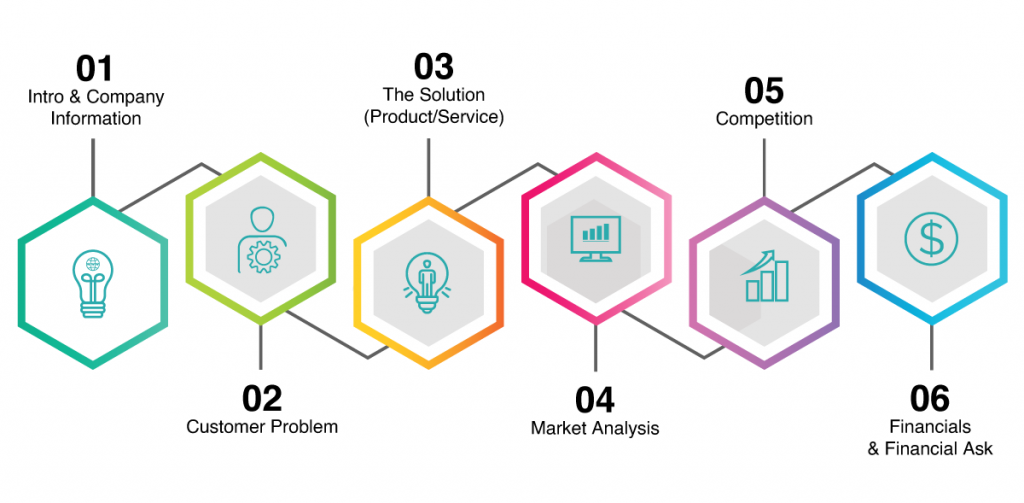Business plans are long and comprehensive documents. Although investors may receive business plans regularly, they actually read very few. You may spend months writing your business plan, but the unfortunate truth is that most investors will only spend a few minutes with a document before deciding whether it’s an interesting venture or not. The key to getting investors to read your business plan is to create a detailed and effective executive summary. In this post, we will detail exactly how to write an executive summary that captures investors’ attention and gets your business funded.
What Is An Executive Summary
An executive summary is a short document that precedes a comprehensive business plan. With a length of fewer than two pages, executive summaries provide a quick synopsis of the accompanying proposal.
The main objective of an executive summary is to drive curiosity and convince readers to read the remainder of the business plan document. While the executive summary often reiterates the same points as the business plan, it does so with much less detail.
The executive summary should be relatively short but should provide the data necessary to validate any claims. While the summary includes research, it excludes elements that may be found further in the plan like charts, graphs, and deep analyses.
When seeking to land an investor, secure a loan, or persuade potential partners, a strong executive summary is critical. A successful executive summary makes the reader want to learn more. A failed executive summary makes them lose interest before they have a chance to learn the fine details of the business.
How To Write An Executive Summary That Wins

Throwing together an executive summary on a whim is pointless. Realize its importance and give your best effort. Your ability to get funded may be directly linked to the quality of your summary. In this section, we will show you how to write an executive summary that investors pay attention to. These five tips are based upon our experience after working with hundreds of startups, and they will help you avoid the obstacles faced by many entrepreneurs when writing an executive summary.
Display it first, but write it last.
Executive summaries are always presented first in a business plan format. However, the best summaries are written after the actual business plan has been completed.
As you write your business plan, you will uncover information, detail complex strategies, and introduce the research that backs your claims. In most cases, you will not know the depths of your business until you go through the complete business planning process.
Once your business plan is written, creating your executive summary becomes much easier. The information in your business plan will lay a foundation for your executive summary and provide the details needed to deliver a convincing case.
Make it persuasive and convincing.
An executive summary isn’t just an informative document. In many cases, an executive summary functions more like a sales document. What are you selling? You’re selling the rest of the plan.
Business plans can be extensive. A comprehensive business plan can be 40-50 pages or more. Just because you’re excited about having someone read your business plan doesn’t mean that they will be equally excited to read it. Reading through a business plan can be a tremendous time-consuming feat. If you want readers to read your plan, you’ll need to convince them to do so with your executive summary.
Think of your business plan as if it were a novel. The executive summary would serve the same purpose as the blurb on the back of the book. Before purchasing an unfamiliar novel, most people read the blurb. If the blurb excites them, they consider purchasing the book. If the blurb doesn’t pique their interest though, they will put the book back on the shelf and move on to the next.
Essentially, an investor will do the exact same thing if your executive summary fails to excite them.
Keep it short, but informative.
The ideal executive summary is one page. This length is easily digestible but provides enough room for you to give a thorough synopsis of your plan. Only provide the details that really matter.
Stick to the main points and give the reader something to look forward to. Use the space wisely. Place every word strategically. Each sentence should be well thought out and each section should give the reader exactly what they need to understand your concept better.
Align it with your business plan.
When an investor reads your executive summary, they expect that the accompanying business plan will go into greater detail about what they just read. Don’t use the executive summary to present new ideas. Instead, use it to highlight your business plan’s most prominent ideas.
Make sure your business plan has a table of contents. Sometimes, readers will read the executive summary and want to immediately learn more about a specific point.
Support it with strong research.
Don’t oversaturate your executive summary with too much industry research, but give enough to support your case. Cite your resources and show that your ideas are validated by real data. Use data only in the paragraphs where it is most expected. For example, when estimating market size, a strong stat or data point is expected.
The executive summary isn’t the place to trap readers into a dark-hole of research. Instead, you should use data to help drive the reader’s interest and convince them to continue reading the plan. Consider how stats and data are used in a television commercial. They are used to validate the existence of a problem – not placed just for the sake of presenting data.
Writing Your Executive Summary

Now that you know the rules behind writing a fantastic executive summary, it’s important to choose and follow a proven format. Follow our guide below to write a captivating five-to-six paragraph executive summary.
1) Intro and Company Information
Start off your executive summary by introducing the document and stating its purpose. Arguably, the first sentence is the most important sentence of the entire executive summary.
This section will make the initial impression upon the reader and set the stage for the rest of the document. Provide some background on the business, its founders, and its core values. Use this paragraph to describe any notable milestones that have been reached.
2) Customer Problem
Describe the issues and challenges that consumers face. Why is a solution needed? Use data to validate the existence of a real problem. Does your solution serve a real problem that a large number of consumers are facing?
Just because you realized that a problem exists doesn’t mean that people need a new solution. Some problems aren’t really problems at all, and some aren’t big enough to convince a consumer to pay for a solution.
3) The Solution (Product/Service)
Now that you’ve described the customer problem, you can introduce your product or service – which should be a direct solution to the aforementioned problem.
Describe what makes your product the perfect solution to their challenge. Explain how it works, what features it entails, and the benefits that consumers will receive by purchasing and using your product or service. Keep your product detail brief. Be strategic in how you present your product. Remember that you don’t just want to present information about your product or service, you want to sell it enough that readers want to continue reading to learn more about it.
4) Market Analysis
In this paragraph, it is important to introduce some of the research and data that you have collected.
Explain what market you will serve, why that market is the right market, and how big that market is. Look for reputable data that shows how many people exist in the specified market or how much revenue a particular market earns on an annual basis. Try to identify what percentage of this market you can realistically capture and how much revenue you can realistically produce.
5) Competition
Competition exists even if you have an incredibly innovative and one-of-a-kind product. It’s important that your executive summary shows that you understand the competitive landscape that your business will operate in.
Introduce the brands that you will compete with and explain how you will differ. What is your competitive advantage and why would a consumer choose you over the competition?
6) Financials & Financial Ask
At the end of the executive summary, describe the financial side of your business.
Detail the revenue plan. Explain your fundraising goals and itemize your requirements. How will it translate to revenue? When will you break even?
Be realistic about your financials. Use your research to prove that your projected revenue is actually possible.
Using Your Executive Summary
Simply writing an executive summary isn’t enough. An executive summary is a great tool, but the thing about having a tool is – you must know how to use it! Likewise, you need to know how to write an executive summary that engages and draws curiosity from readers.
Use your executive summary as an introductory document. When having a conversation with an interested party, offer to send them your summary. Keep the file handy on all of your devices (including your mobile phone) so you can email it over immediately.
Send the executive summary over before sending the entire business plan. If you were successful in garnering their attention with your executive summary, they will request more information. At this point, you can supply them with your full business plan or pitch deck to provide further detail about your business.
Need help writing your executive summary or business plan? We’d love to help. Our business plan consultants have worked with hundreds of startups, helping them raise the funds needed to start and grow their businesses. Contact us today and schedule a consultation!









